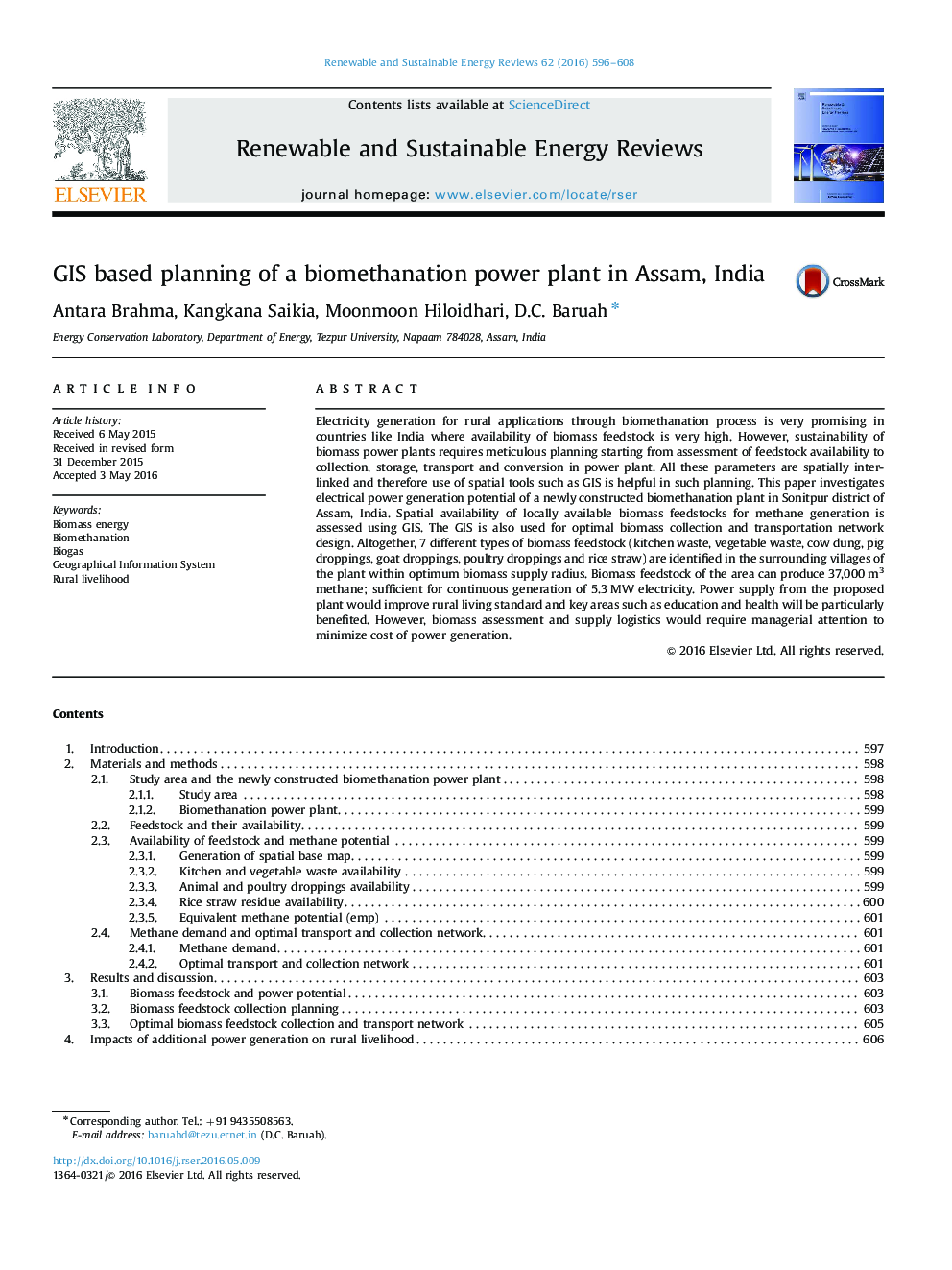| Article ID | Journal | Published Year | Pages | File Type |
|---|---|---|---|---|
| 8113557 | Renewable and Sustainable Energy Reviews | 2016 | 13 Pages |
Abstract
Electricity generation for rural applications through biomethanation process is very promising in countries like India where availability of biomass feedstock is very high. However, sustainability of biomass power plants requires meticulous planning starting from assessment of feedstock availability to collection, storage, transport and conversion in power plant. All these parameters are spatially inter-linked and therefore use of spatial tools such as GIS is helpful in such planning. This paper investigates electrical power generation potential of a newly constructed biomethanation plant in Sonitpur district of Assam, India. Spatial availability of locally available biomass feedstocks for methane generation is assessed using GIS. The GIS is also used for optimal biomass collection and transportation network design. Altogether, 7 different types of biomass feedstock (kitchen waste, vegetable waste, cow dung, pig droppings, goat droppings, poultry droppings and rice straw) are identified in the surrounding villages of the plant within optimum biomass supply radius. Biomass feedstock of the area can produce 37,000Â m3 methane; sufficient for continuous generation of 5.3Â MW electricity. Power supply from the proposed plant would improve rural living standard and key areas such as education and health will be particularly benefited. However, biomass assessment and supply logistics would require managerial attention to minimize cost of power generation.
Related Topics
Physical Sciences and Engineering
Energy
Renewable Energy, Sustainability and the Environment
Authors
Antara Brahma, Kangkana Saikia, Moonmoon Hiloidhari, D.C. Baruah,
